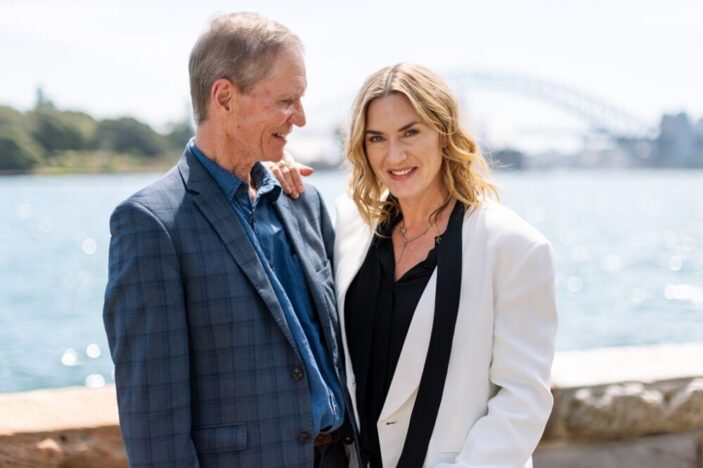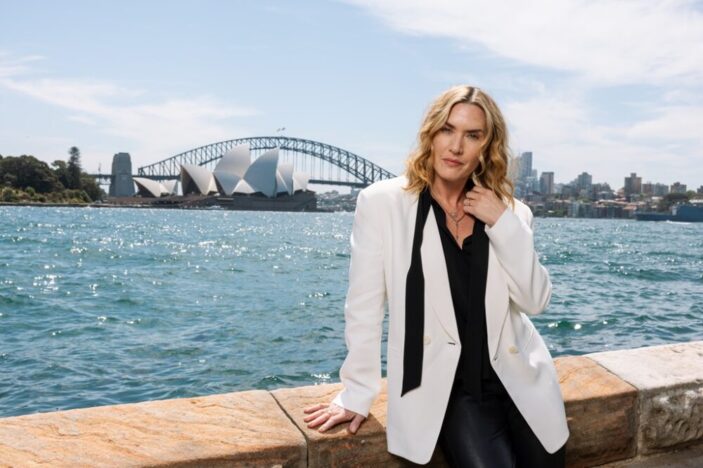
Oscar winner Kate Winslet stars in Lee, a fascinating portrait of the great American war correspondent Lee Miller, whose singular talent and ferocious tenacity gave us some of the 20th century’s most indelible images.
A former model, Lee is now tired of being viewed through a lens and by men, and focusses on her own work as a photographer. As the threat of war looms, everything about their daily lives changes completely, almost overnight. Frustrated by the restrictions placed on female photographers at the time, who are limited to documenting life on the home front, Miller urges her female boss at British Vogue, to request permission for Lee to go to the frontline. With a profound understanding and empathy for women and for the voiceless victims of atrocious crimes, her images feature both the fragility and ferocity of the human ability to survive, exist, fight, defend and live.
As the film arrives in Australian theatres this week, Winslet and photographer and director of the Lee Miller Archive and Penrose Collection, Antony Penrose, who is also Lee Miller’s son, visited Sydney to discuss their collaboration. Peter Gray sat down with both to talk about the film reshaping the public’s perception of Lee and the importance of honouring her life through the years that many don’t truly know about.
Do you feel there was a misunderstanding of your mother and that this film helps reshape a perception of her?
Antony Penrose: She was definitely misunderstood. And she had never told anyone what she had achieved, where she’d been, or what she’d done. She never told of how much she suffered to get to the truth of what she was looking at. It’s not surprising that she was misunderstood and, subsequently, misrepresented. There was just this huge gap in our understanding, which were the “war years.” We all knew she had been a photographer and a model before. New York, Paris, Egypt…she’d made a good job of it. But nobody really knew what she had done during the war.
We knew that she’d been a war photographer, but she refused to talk about it. We thought that maybe she’d been whizzed around a jeep a few times, had done some glamorous shots, and come home. There was so little evidence of anything. In some ways, it was under my nose the whole time, because there were a number of back issues of Vogue in the house, but she never drew attention to it. It was just another magazine.
So, yes, what the film’s done is give a real understanding to this woman. She could’ve gone back and lived in America, completely out of harm’s way, but instead, she chose to put herself at extreme risk and extreme discomfort for a long period of time. And she did this because she wanted to tell the stories of her friends who were left behind. To tell the story of those who had been persecuted. Misrepresented? Well, yes, many described her as being a man-crazed muse. The woman who looks so glamourous on the covers of Vogue. That was so trivial. It was such a minor part of her life. She was so much more than a muse, this passive figure who wanted to be adored. Come on, the woman had a brain.
And in playing her, Kate, one of the things I loved was that mix of professionalism and vulnerability. What were the challenges for you in balancing that light and shade of her as a person.
Kate Winslet: There was enormous challenge in all of it. Getting the balance right between having her be brave, but not be afraid of shying away from the fear that she felt. Just because someone is courageous doesn’t mean they aren’t fucking shitting themselves. She was. And she wrote about that. And it’s very important in playing strong women that we aren’t just playing them as (lets out a roar), because you can’t be a fully formed human being unless you have experienced every single form of human emotion. And Lee had certainly experienced that in bucketsful.
In the same way, it was equally important to show how compassionate and warm and affectionate she had the ability to be. She was a very compassionate woman of other women. And a huge champion of other women. More importantly, she didn’t hate men. And it was very interesting for me when we were putting together the PR strategy for the film, and, I don’t think I’ve ever told you this story, Tony, but one of the individuals who was on that call when the film was still in the edit, was a man who hadn’t seen the film, because it wasn’t finished. He had done his Googling, but that was as much as he’d done. And he started to mansplain to us about how important it was for films that had women at the core who had experienced trauma not to alienate the male audience, because he man-hating element can be really challenging, so our target audience should be for women around the 24-40 years old bracket. I told him, “Sorry, I’m just going to have to stop you there. You aren’t going to be on the team to promote this movie and I’m going to tell you why. If this was Top Gun, would you be pitching the film to men aged 25-40? No, you wouldn’t. Because it’s got Tom Cruise in it.” And no offense to Tom Cruise, but what the hell was this guy talking about?
I told him that he decided Lee hates men because she was raped when she was 7. “Go and do your homework, you fucker.” Literally, I was so mad, and I knew that we had to remove the word “muse” from all of these press packs. We are not going to say any of that stuff, because what we wanted to say with this film was to make a film that redefined who Lee was. It’ll get rid of the labels. This stupid, reductive “muse” word. And we’re going to hope that for the people that meet Lee Miller for the first time because they’ve gone to see this movie will understand her and who she truly was. On her terms. This version of Lee, without all this baggage and silly attachment to her love life, which people seem obsessed with.
That was such a long-winded way of answering your question about if it was challenging. But it was challenging for those reasons as well, because I wanted to create a woman who had this extraordinary heart and soul, and had a really visceral way of really seeing people. She never judged people. She was utterly without malice. And she was able to show up and be present, and stay present. And there’s so much to be said for that today, because we’re fast, everything’s in soundbites. It’s just that thing of stopping and listening and observing. And Lee wasn’t just observing, she was stepping in. And that’s what separates her work from so many more photographers of her time. Certainly the male ones.
Watching this film, and hearing dialogue about that anyone with an opinion – those of different races or sexuality – were just shipped off, it really makes you see how much further we still have to go in terms of equality. A film like this could very easily be set today regarding certain aspects.
Antony Penrose: I’m glad you’ve said that, because today there are some astonishingly brave female journalists. Out there. Right now. And we owe them.
Antony, with the Lee Mill archives preserving her work, do you see a film like Lee being used as a prime example regarding media surrounding women in wartime journalism?
Antony Penrose: Well, I certainly hope so. One of the things I’ve always wanted to do with this film is reference it to modern day material. The way that Kate has made this movie is really inspirational, I think. Fortunately, today they don’t have the same density of weight to push against, the way they would have in 1940, but it’s still there. It still needs addressing. And we have a long way to go. The fact that we are getting feedback constantly from women, saying how inspirational it was and that they’re changing their career path, or they’ve dumped that toxic relationship, or they’ve gone out and done something they thought they couldn’t…whenever I hear something like that, I think, “Yes!”
There’s a couple of women I’ve met who have gone off and become conflict photographers. It’s not something I’d recommend, but it’s happening. And it’s because they’ve been inspired by Lee.

And Kate, you’ve played many strong women across your career. Has this film transformed your perspective on history or the storytelling aspect of history?
Kate Winslet: It hasn’t transformed it. It’s reinforced it. I’ve always felt very strongly that the more we are able to tell the stories of other women, significant women, the more others will follow suit. It’s not easy, because we’ve just to keep going in order to make that shift. To change the culture around the way people perceive these films. But what we have also found with the film, is that people, women in particular, are going back to see it and they’re taking their sister or their mother or their friends. I spoke to my father-in-law and he’s seen it twice now. Wow, you know. He’s 78. And my mother-in-law has seen it three times. And she’s gone back to take different people each time. And she’s just lost the sight in one of her eyes, and I find that particularly heartbreaking that she’s sitting there with one eye, and desperately looking for the nuances and picking up on all the things that we wanted to feel as authentic as possible. And she spotted all of it. “Oh, dearest Kate, I loved that moment where your hand is shaking when you’re changing the film.”
Antony Penrose: Oh, wow, she spotted that?
Kate Winslet: And just talking about that, just even trying to operate the camera, and I worked for a brilliant camera historian who built the replica Bolex that we had. And he and I and Tony, together, helped me figure out how to use the camera. I was able to literally copy how to use the focus and the mechanics of it, so that I could actually use it. I was actually recreating a number of those images as we were filming. And I was the only one on set who knew how to change the film. When you run out of a roll of film, you can’t fake it, because the wheel just free-wheels, and there’s no way you can fake that. So I would have to change the film whilst on camera, and I was so proud in the final edit that we caught a couple of those moments where I’m actually doing that in the way Lee would’ve done. I did actually get quite good (laughs).
Antony Penrose: She really is good. The images just got better as filming went on. Which isn’t surprising (laughs). But we have an exhibition at the moment, which is Lee’s photos, the production stills, and Kate’s images. So, it’s the same scene through three different lenses. It’s extraordinary. And it also tells us the authenticity of the film. They took such immense car in order to replicate.
Obviously, the last image we see in the film is that infamous shot of Lee in Hitler’s bathtub. Was that always going to be the one that held the most emotional weight on screen? Because we see you recreate it.
Kate Winslet: It was actually the opposite. We tried to not put too much weight on it, because it is such an iconic photo. What we didn’t want was the historians watching going, “(Rubs hands) Right, can’t wait to see how you fuck this up.” (Laughs) Little did they know we were never going to be fucking it up. There were several scenes that were, not necessarily being re-thought, but worked on and finessed, and obsessed over. But what so often happens is something can be overworked. I’m sure you know this yourself, where you can’t see the wood through the trees, and you just have to put it down, go have a glass of wine, and look at it tomorrow. So, we had a few scenes that were a bit like that.
The scene with Lee and Audrey on the stairs was very much like that, and the bathtub scene was very much like that, and the interview sequence between Lee and Tony was also a little bit like that. But the bathtub scene, my God there were so many different iterations of it. I always knew that when we crept closer to shooting it, I was just going to stop looking at it. I knew what it was. Learning dialogue is just not a thing anymore because I know it so well. But what I didn’t realise that I would feel until I was in there was that sense of being free with Lee’s playfulness. That spirit that she had.
You can see it in that scene. I think it’s when the frame breaks, and you see her just take the picture out and rest it there.
Antony Penrose: When the glass hits the floor, you always think she’s going to step out onto it.
Kate Winslet: With that scene, there was one part of it that was deliberate and one part that was a complete accident. So when I got into the bath, I kept wondering how we were going to show it. By the way, it’s (Hitler’s) headshot. He would sign them.
Antony Penrose: See, the reason she chose that photo was because that photo was one that appears all over the Nazi-occupied territories. One of the versions says “Ein Volk, ein Reich, ein Fuhrer”, which means “One People, One Country, One Leader.” And if that doesn’t make your blood boil. So this was the sacred Nazi image and she just smashes it on the edge of the bath.
Kate Winslet: So when we decided that she’ll see it on the wall and rip it off, we obviously knew the historians would be like, “Oh fucking fuck, it’s in a frame”, but little did they know that the way we easily got it out of the frame was because the steam from the hot water would’ve mist it up. That was in the script, that she would take it out, but we only shot it once because when we took it out of the frame, the glass shattered in my hand. In my mind, I thought, “Oh Lee’s given me another one.” An added extra (laughs). I just cracked up laughing and threw it on the ground. And that’s the only take of that we have. And thank fuck it worked (laughs), and it added very much to this sense of playfulness in Lee.
Lee is screening in Australian theatres from October 24th, 2024.
